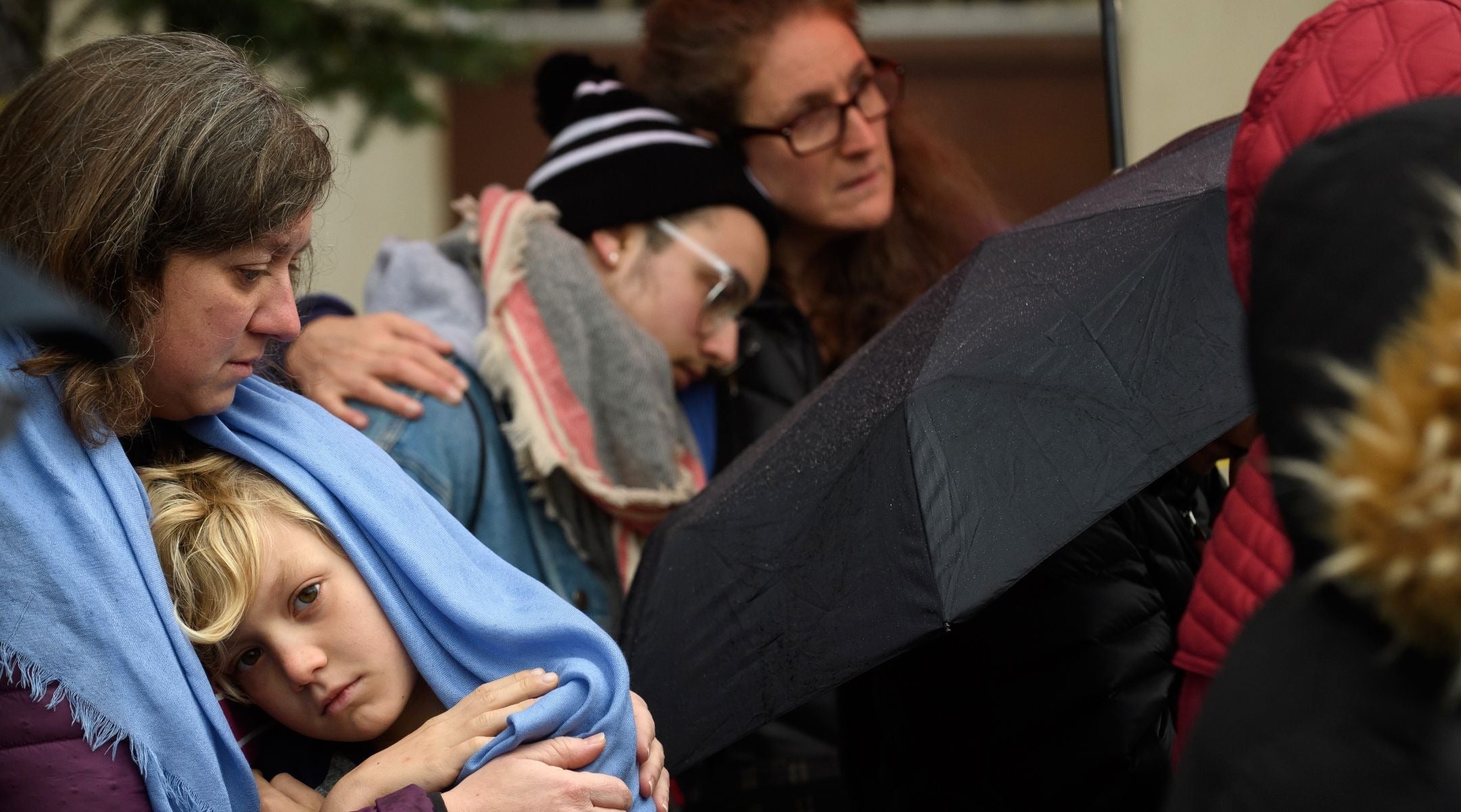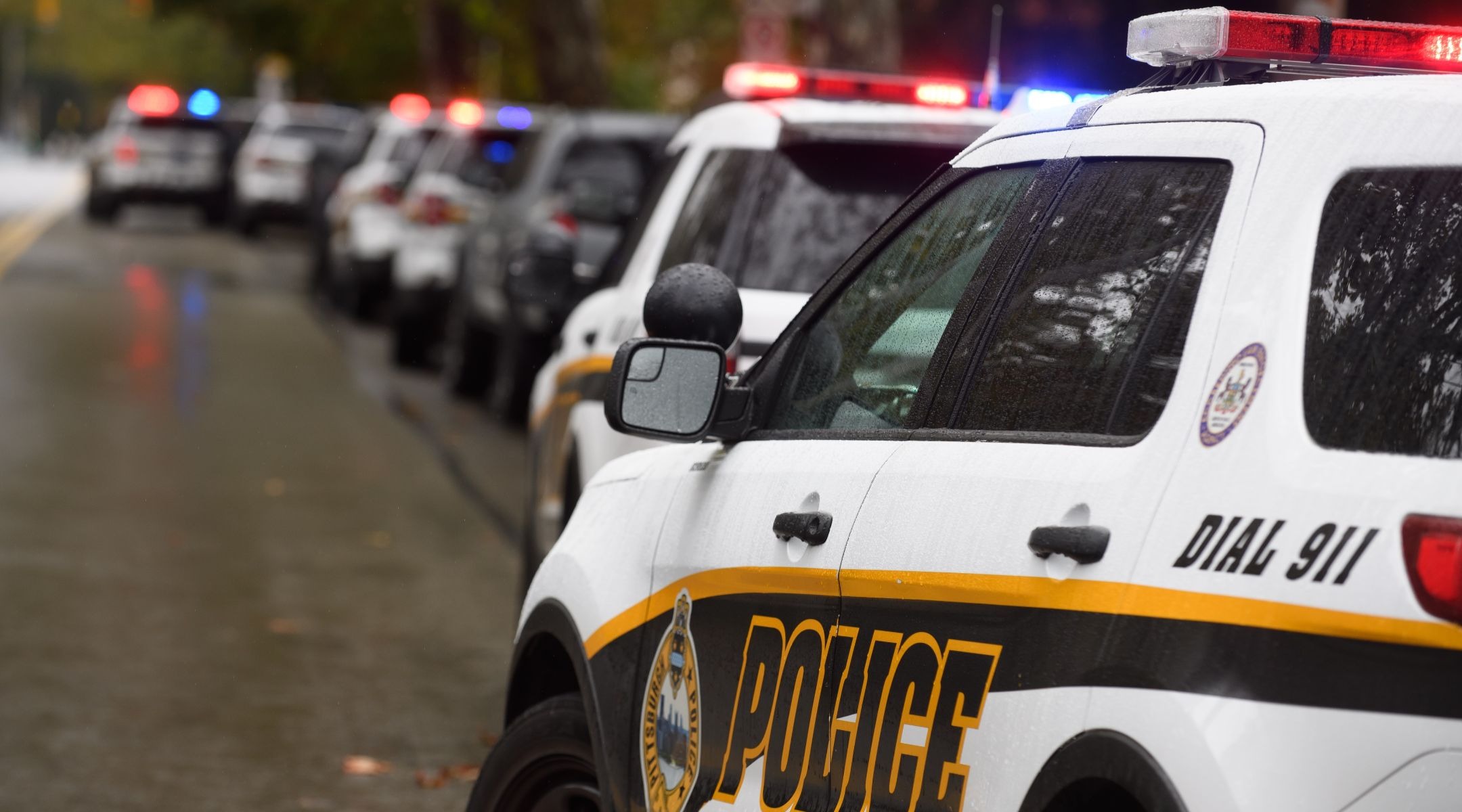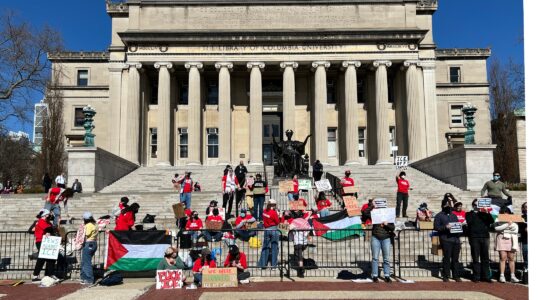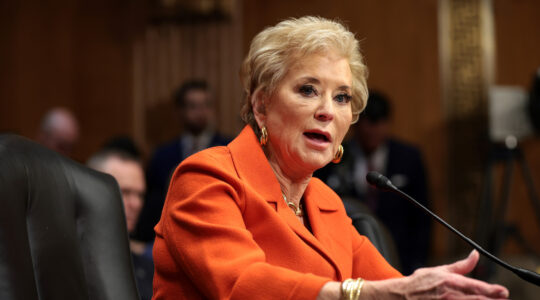WASHINGTON (JTA) — Imagine three Pittsburghs, simultaneously — a multi-pronged murderous attack at Jewish institutions across the country.
The Jewish community’s top security arm did just that last week at an exercise joining community leaders from across the country with senior U.S. law enforcement officials.
Six months after the massacre of 11 Jewish worshippers at the Tree of Life synagogue complex in Pittsburgh, several dozen officials met in a conference room overlooking the National Mall here and reviewed the lessons of that awful day as a means of dealing with future attacks.
The most surprising and poignant recommendations came from survivors of the Pittsburgh shooting — for better or worse. They recalled practices that already were in place and probably saved lives, among them persuading otherwise Shabbat-observant rabbis to carry cellphones strictly for emergency use and urging people to flee a shooting rather than hide in place.
The tabletop exercise was organized by Secure Community Network, an arm of the Jewish Federations of North America and the Conference of Presidents of Major American Jewish Organizations. The Jewish Telegraphic Agency was invited to cover the session on condition that it not quote officials on the record describing details of security procedures.
The three-city scenario imagined a car-ramming and shooting attack on the Jewish Community Center in Memphis, including surveillance by a mysterious drone, and almost simultaneous shooting attacks on a Jewish student barbecue at the University of Michigan and a Boston-area synagogue.
Michael Masters, SCN’s director, made it clear that such a nightmare was not out of the question.
“From the dark recesses of the internet to world capitals we see an increase in activity, an increase in threats to our community,” he said.
The lessons were communication, communication, communication: Between national security agencies and local state and law enforcement, and local Jewish agencies and law enforcement. Security officials should be familiar with how communities most commonly communicate for the more mundane realities of Jewish life: Find out the listservs and WhatsApp networks for religious schools, for adult Jewish education, for sports.
Get out information that delivers the facts and is stripped of emotive language, and recommends specific actions.
“We don’t want to start a panic. Law enforcement should tell us what level the threat is,” one participant said. “You can’t just send out an alert after alert. We need to give people an action step, not something to make it worse.”
According to the tabletop exercise, keeping in touch was vital not only to summon law enforcement (it took Pittsburgh first responders less than three minutes to confront the Tree of Life killer), but to identify threats in advance. The tabletop exercise included early warnings of threats on Jewish institutions in California.
The problem with that portion of the tabletop, participants said, was that often there are no advance warnings; the Pittsburgh killer had been below the radar.
Pittsburgh officials said the community had run two exercises in the year previous. As a result, the Tree of Life rabbi, Jeffrey Myers, who is Sabbath observant, was persuaded to carry a cellphone, and he was the first call to alert police.
Orthodox synagogues, participants said, were now interested in early warning systems suitable for Shabbat, when the observant eschew mobile phones and broadcast technology. Such systems would use phones designated only for emergency calls and alarm systems that would warn worshippers in case of a nearby attack. In Pittsburgh, Orthodox worshippers learned of the attack only when alerted in person that they were to remain indoors during a lockdown.
Stephen Weiss, a teacher who was in the Pittsburgh synagogue complex, learned from exercises held in advance that it was better to flee than hide. Someone was yelling for the worshippers to duck, but his training kicked in and he fled. Weiss encouraged others to follow suit, saving lives.
“I knew that getting down was not the best thing, it was to get out of the room,” he said. By exiting the sanctuary, Weiss was able to warn others in the three-congregation complex to get out of the building.
As part of the advance training for attacks on Jewish institutions, Pittsburgh first responders learned how to tend to the wounded while police were still engaging the attacker, which likely also saved lives.
Another recommendation was to select in advance the site most amenable to gathering families and sorting through information. Pittsburgh set up a command center at the local JCC, which was near the scene of the attack.
Brad Orsini, the community security director in Pittsburgh, said ushers should be trained to lead the response during attacks. Unfortunately, he said, his experience was that most ushers at synagogues were “900 years old,” and he called for communities to train younger ushers. There was knowing laughter in the room.
A number of officials addressed the logistics of providing warnings to broad networks of member institutions, particularly schools or synagogues that are pretty much the Jewish presence in isolated communities and lack broader support nearby.
Participants also spoke of the need for psychological preparation for attacks. Matthew Berger, the vice president for communications at Hillel International, urged others to designate two communications officials: one to gather information from first responders and officials, and one to distribute it to others, including the media. Juggling both is overwhelming, he said.

Worshippers mourn at a Shabbat prayer vigil Saturday morning in front of the Tree of Life Synagogue in Pittsburgh, Nov. 3, 2018. (Jeff Swensen/Getty Images)
Another federal agency official said that in a crisis, responders would likely want to prioritize new information that would help stop the attacker and could lead to cutting off families desperately seeking information.
“Someone calling from out of state, saying ‘is that my family?’ and someone saying ‘that’s my Enterprise van’ is two different things — but you don’t want the bureau cutting off families,” the official said.
Rabbi Deborah Waxman, who heads the Reconstructionist movement, recalled speeding to Pittsburgh from Philadelphia immediately. The first thing she noticed was that the rabbis, expected to attend to the pastoral care of traumatized families, were themselves traumatized.
“Those hours at the JCC were absolutely brutal,” Waxman said. “The folks I spoke with desperately wanted pastoral support.”
Her recommendation: Set up a network of regional rabbis, so in the event of an attack they are ready to supplement local rabbis in caring for the community.
JTA has documented Jewish history in real-time for over a century. Keep our journalism strong by joining us in supporting independent, award-winning reporting.






